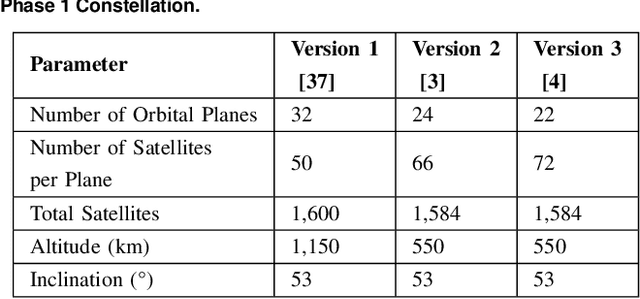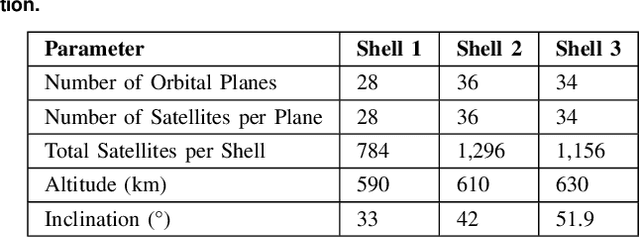Free-Space Optical (FSO) Satellite Networks Performance Analysis: Transmission Power, Latency, and Outage Probability
Paper and Code
Dec 08, 2023



In free-space optical satellite networks (FSOSNs), satellites can have different laser inter-satellite link (LISL) ranges for connectivity. Greater LISL ranges can reduce network latency of the path but can also result in an increase in transmission power for satellites on the path. Consequently, this tradeoff between satellite transmission power and network latency should be investigated, and in this work we examine it in FSOSNs drawing on the Starlink Phase 1 Version 3 and Kuiper Shell 2 constellations for different LISL ranges and different inter-continental connections. We use appropriate system models for calculating the average satellite transmission power and network latency. The results show that the mean network latency decreases and mean average satellite transmission power increases with an increase in LISL range. For the Toronto--Sydney inter-continental connection in an FSOSN with Starlink's Phase 1 Version 3 constellation, when the LISL range is approximately 2,900 km, the mean network latency and mean average satellite transmission power intersect are approximately 135 ms and 380 mW, respectively. For an FSOSN with the Kuiper Shell 2 constellation in this inter-continental connection, this LISL range is around 3,800 km, and the two parameters are approximately 120 ms and 700 mW, respectively. For the Toronto--Istanbul and Toronto--London inter-continental connections, the LISL ranges at the intersection are different and vary from 2,600 km to 3,400 km. Furthermore, we analyze outage probability performance of optical uplink/downlink due to atmosphere attenuation and turbulence.
 Add to Chrome
Add to Chrome Add to Firefox
Add to Firefox Add to Edge
Add to Edge